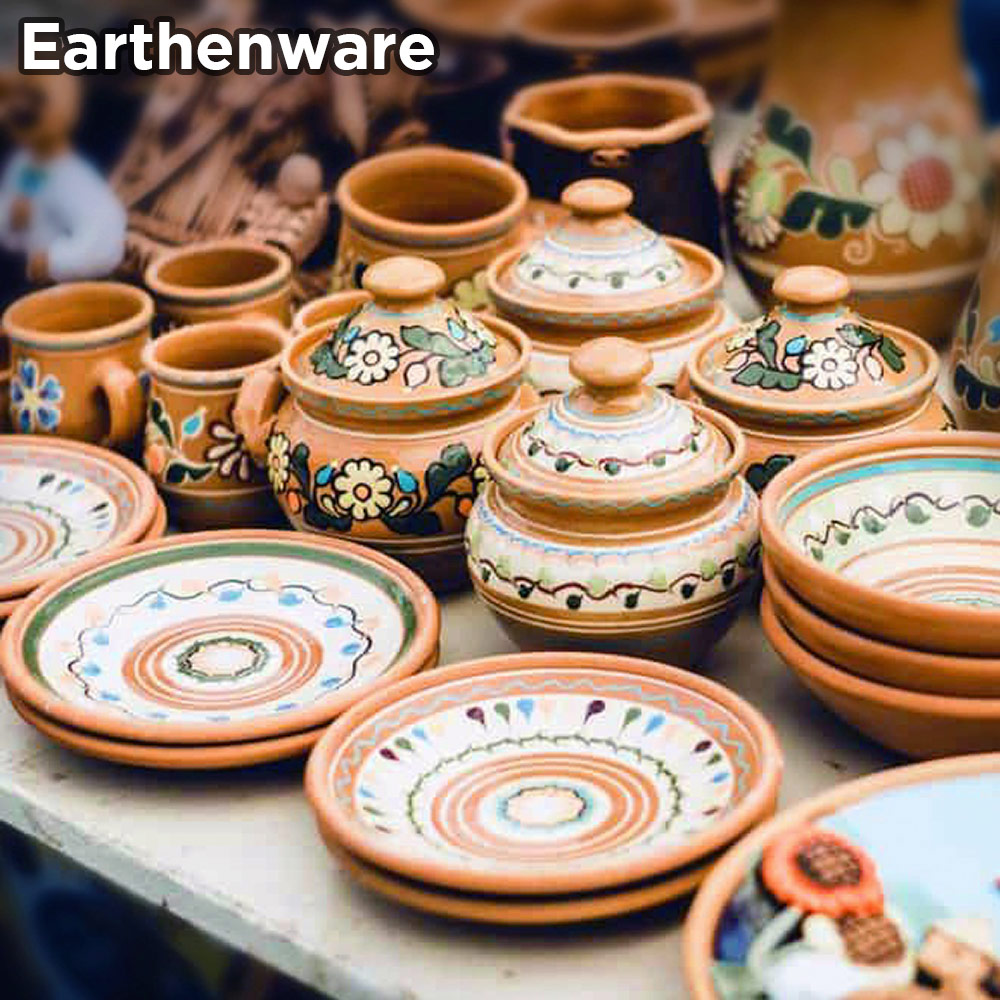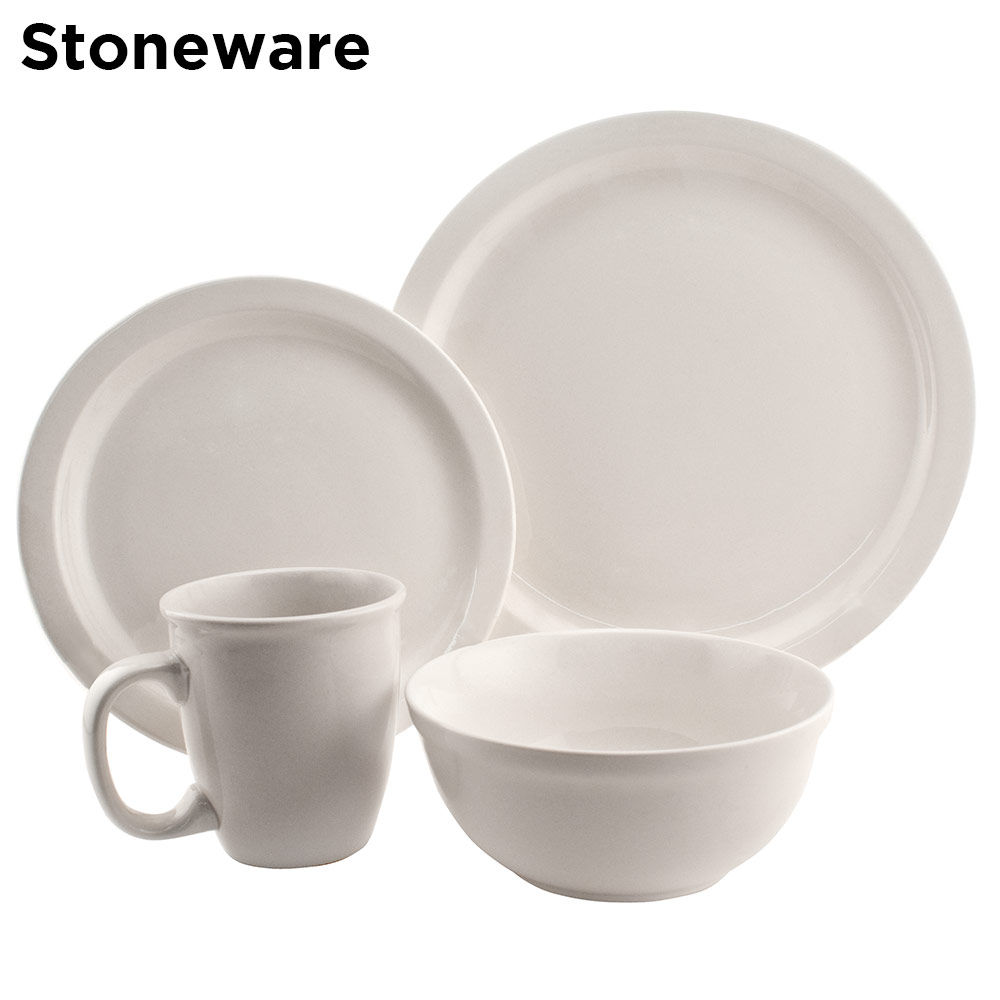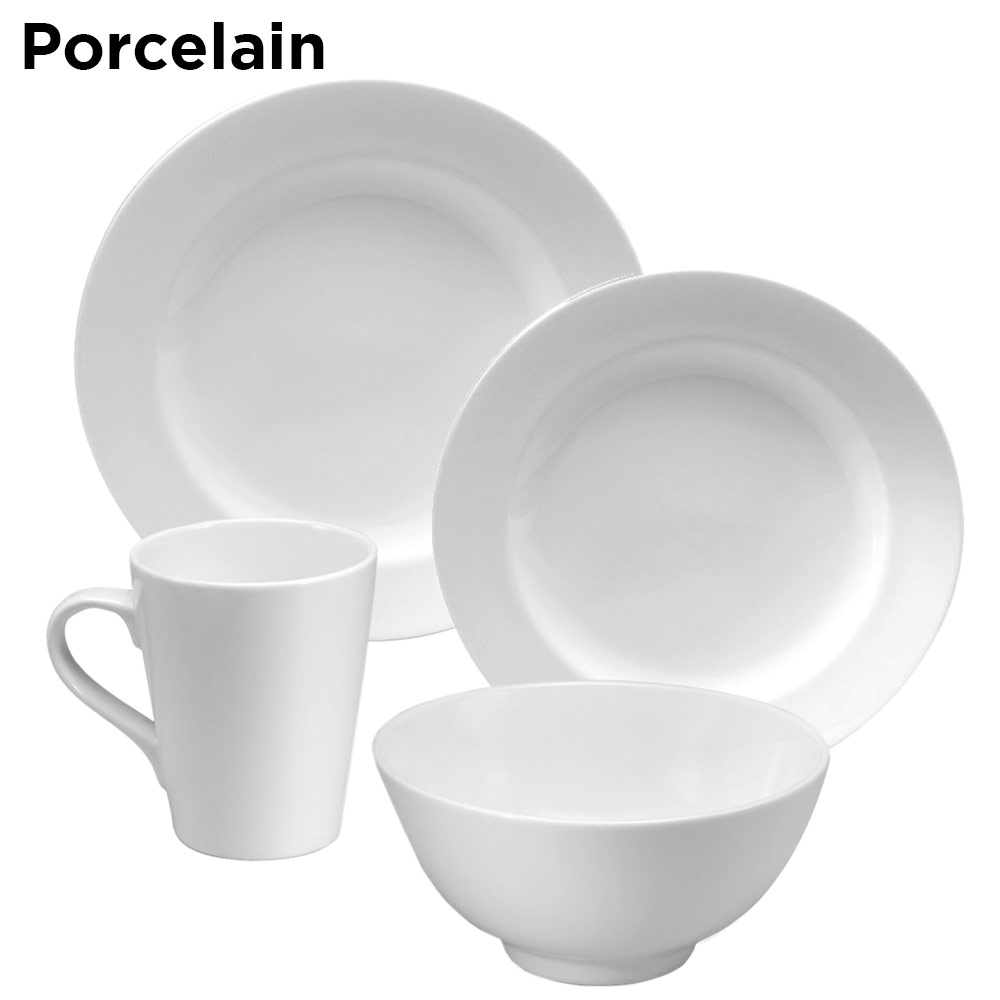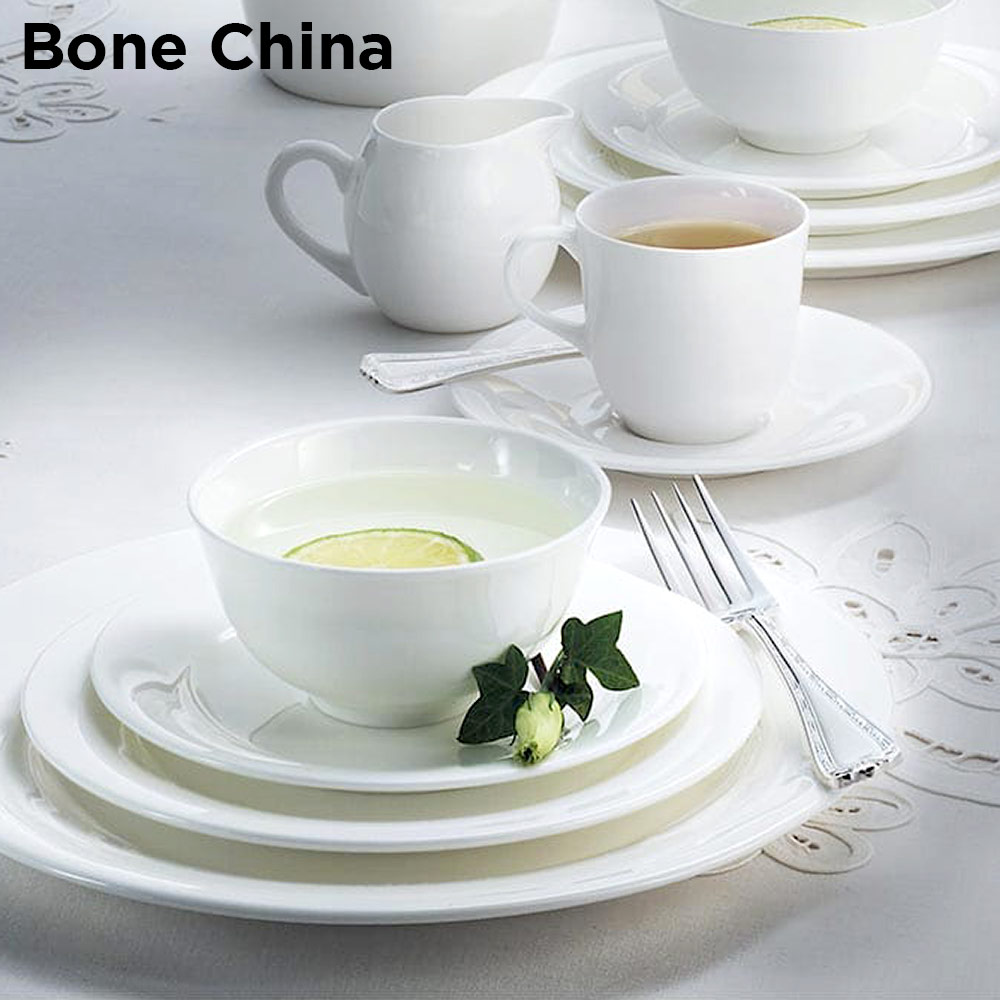When it comes to choosing the best material for your dinnerware there are several choices. There is the family of ceramics (earthenware, stoneware, porcelain and bone china) but also glass, melamine or in some cases, plastic.
To answer the question, we will focus on only the ceramic made dinnerware. To understand the pros and cons of each material, we will study each one of them and gather key things to know about each material so we can understand the differences between porcelain and stoneware and bone china.
The types of ceramic
Here are some short descriptions of the 3 type of ceramics we will be focusing on – stoneware, porcelain and bone china.

Earthenware: this type of ceramic is heavy, sturdy and casual. The color is usually brown or red. It’s better to keep it off temperature changes and it’s better to avoid the microwave and oven. This material is very porous which means it could stain or absorb liquid. It is also the cheapest but also the less resistant of all the type of ceramics. Often hand painted and fragile. For these reasons we don’t recommend it for hotel/resort use. While the design and look could work well with certain hospitality aesthetics, the material properties just don’t fit well with a hospitality setting.
Stoneware: less porous than earthenware, stoneware is also more durable and has a lighter color (but is more opaque than porcelain). It’s fired at a temperature between 2150 and 2330 degrees Fahrenheit. It is pretty durable but not as refined and delicate as porcelain. It’s a good family style option but keep in mind it’s not eternal. We have offered stoneware patterns for decades and while it isn’t as upscale and luxurious as porcelain or bone china, it often offers the most “bang for buck” value for use in in-room kitchens within extended-stay hotels and vacation ownership condos.
Porcelain: is the non porous option of ceramic. It has an incredible durability resulting from the high firing temperature. Porcelain is also resistant to microwave, oven and freezer. Finally, this type of ceramic is also dishwasher safe. This material is usually white.
Bone China: is generally made from a mixture of very refined clay and bone ash. It is very white, almost trans lucid. Bone China is also very elegant and refined but is also very resistant. Great for special occasions but also durable enough for daily use..
From yet another source (also edited):
- Porcelain: Always a Bright White Body, High heat fired, vitrified glaze for maximum durability. Recommended for high volume establishments. Used in both casual and upscale establishments.
- Bone China: Cream Colored Body, High heat fired, vitrified with min 25% Bone Ash added for strength and translucency. Typically, this lighter body weight product is used in upscale environments.
- High Alumina: Always a Warm White Colored Body strengthened by the Aluminum Oxide additive. Most ceramics contain some alumina, but Hi-Alumina products are positioned at the high end of the market due to the expense of the added alumina.
- Stoneware: Close in composition to porcelain but fired at lower temperatures. Less dense and slightly more porous. Usually this product is thicker and has more of a pottery or artisan feel. It can be softer, more porous and less durable.
Here are a few additional things to keep in mind when selecting dinnerware for your property:
- The glaze can vary greatly – We’ve seen brand new economy plates where on close inspection the glaze is obviously compromised and appeared worn through to the clay. Examine samples to ensure the glaze appears evenly applied, no imperfections and/or worn spots.
- The foot of the plate – can be glazed (which is widely considered a sign of the highest quality), polished (most of dinnerware products have a high polished foot) or dry (not glazed or polished, this foot is rough to the touch and can significantly damage not only the plate below it when stacked but also your tabletop finish!)
- Examine the plates in a stack. Note whether the dinnerware stacks efficiently, is it in a close tight stack or is the stack is loose, thick and leaning? Ideally you can place on unit’s worth of dinnerware (whether service for 4, 6, 8, etc.) within your property’s cabinets prior to committing to a full order. We once brought in a full container of fancy glazed stoneware for a newly constructed resort. Upon delivery, they realize the 11.5” dinner plates had a wider diameter than their 11” cabinets and the cabinet doors wouldn’t close. Of course we made it right for this customer, but had LOTS of 11.5” dinner plates in inventory for some time after that.
Of course, should you have any questions then Lodging Kit’s helpful sales staff is here to provide guidance. Similar to the slogan a well know insurance company uses… “We know a thing or two, because we’ve seen a thing or two.” Whether it’s dinnerware or ANY other products you’re in the process of selecting, our staff is all too well familiar with what works well, and they’ve seen first hand the mistakes that many customers have made during the selection process. Sometimes the brightest shiniest objects are not the most practical solution with regard to value, longevity, and ease of replacement.




Recent Comments